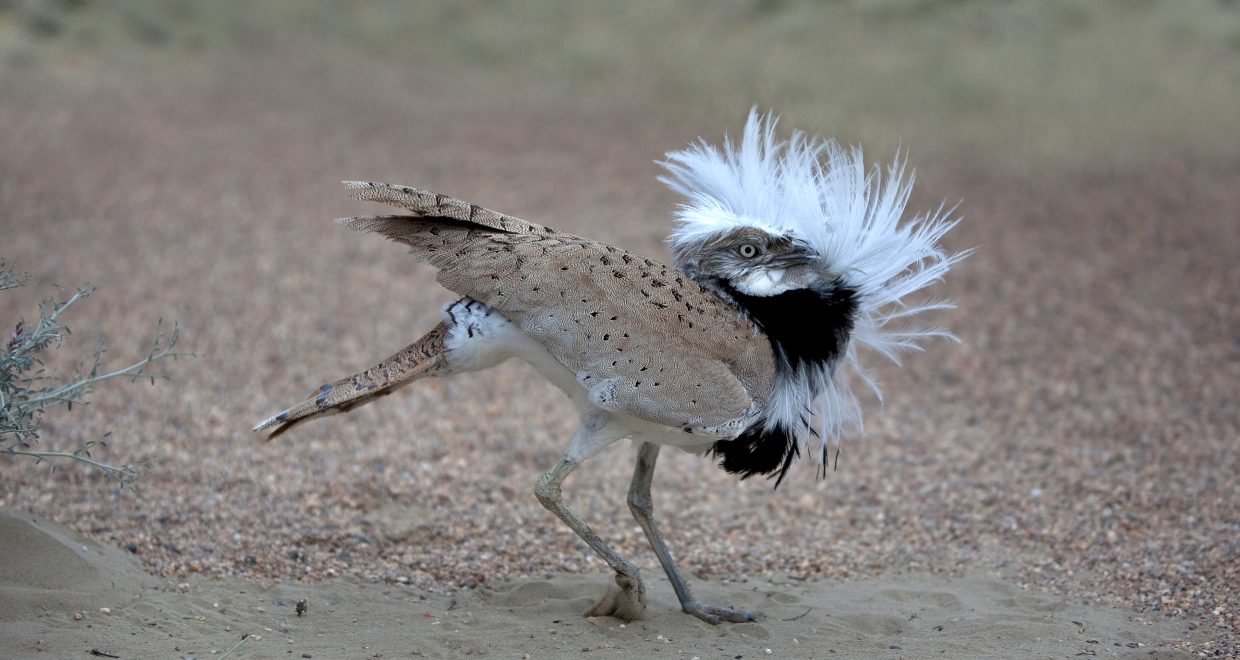Bustard Conservation
Bustards are deeply challenging birds to conserve. Their grassland habitats are in irresistible demand for food production—both agriculture and livestock—throughout their ranges in the Eastern Hemisphere. Their ground-nesting habit demands the utmost vigilance against predators, meaning that they have high levels of intolerance of disturbance. Breeding in crops, as grassland conversion often forces them to do, leads to the destruction of eggs and chicks during harvest. Their size attracts hunters, who in open steppeland can pursue them for miles in cars until they are exhausted and killed—and any bad experience of hunting renders survivors hugely mistrustful of human presence. Their dimensions also make them relatively unmanoeuvrable in flight, and hence exceptionally vulnerable to powerlines (the problem being compounded by the lateral position of their eyes, a condition that has evolved to provide that vigilance against predators). It is small wonder, then, that of the 26 species of bustard, no fewer than 15 (58%) are at elevated risk of extinction (3 Critically Endangered, 1 Endangered, 4 Vulnerable, 7 Near Threatened).
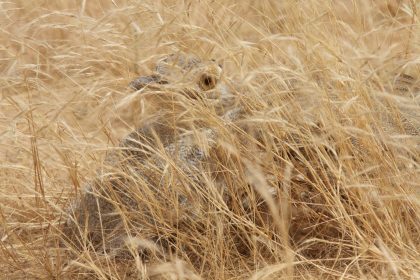
But precisely because bustards are so wary both of humans and of predators, with nest concealment a vital component of their survival biology, they are defiantly hard to study. Finding nests is virtually a matter of chance, or else of highly intensive (and expensive) systematic searching—and both risk the bird deserting, rendering data-gathering useless. Observations of bustards in the wild have to be made at great distances in order to avoid influencing the behaviour of the birds—so expensive optics are needed, and much patience when birds disappear behind slight ridges or in heat haze when there are no natural elevated observation posts. The long necks, wings and legs of bustards are fragile, as are their temperaments, making capture and marking of individuals difficult and dangerous. These problems are magnified when the target species are threatened and consequently often protected by laws that restrict disturbance, even by researchers. And on top of this, bustards are mostly slow-breeding and long-lived, so that robust evidence on vital rates (productivity and survival) can only be gathered by long-term investment in research.
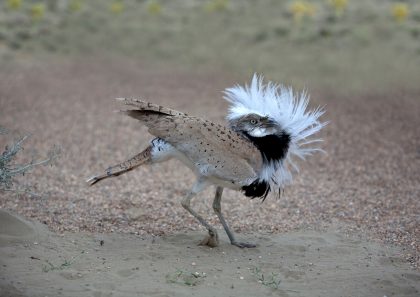
It is therefore a cause for applause that Bird Conservation International has managed to maintain a publication rate of fractionally above one paper on bustards (i.e. with the word bustard or florican in the title) for every year of its 32-year existence. However, the majority of these 33 papers have dealt with just two species: Europe and Asia’s Great Bustard Otis tarda (ten) and Little Bustard Tetrax tetrax (eight), plus the two of them together (two). The African and Asian Houbaras Chlamydotis undulata and C. macqueenii share eight papers, leaving Ludwig’s Bustard Neotis ludwigi and Bengal Florican Houbaropsis bengalensis with two each, and the bustards as a family—in a review of their vulnerability to powerlines—with one.
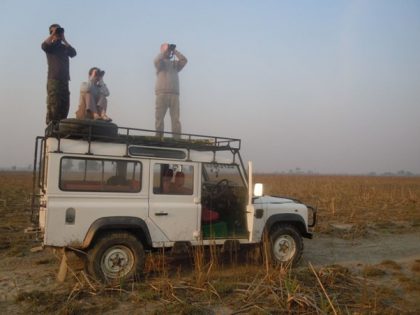
The topics of the papers also reflect the constraints on research. No fewer than 15 papers deal with the population status of species at some geographical level (including global reviews of Great and Little Bustards, plus African and Asian Houbaras together). Four treat the problem of powerlines, a topic which sadly is easy to investigate, since the birds under study are simply either dead or no longer in the vicinity. The chronically intractable issue of human disturbance is addressed also by four papers, while habitat selection and agricultural intensification (which are clearly closely related) are dealt with in three papers each. A brief but pioneering migration report, hunting as a driver of winter distribution, causes of mortality (pinning much blame on powerlines and hunting), and evidence of an alarming male-biased sex ratio occupy a paper apiece.
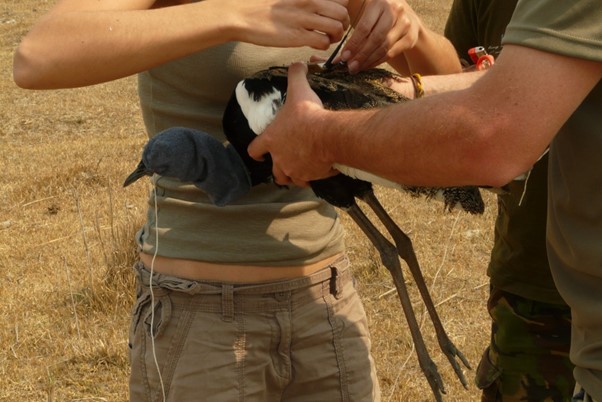
The geographical spread of the papers on bustards published in Bird Conservation International is encouraging, with four global in scope, ten from Iberia (plus one extending to France), four from Iran, three from Austria, two each from Cambodia, South Africa and the United Arab Emirates, and one each from Hungary, Kazakhstan, Morocco, Tunisia and Turkey. This is evidence of the broad base of concern over the plight of bustards within the research community, and all these papers bring important insights to bear on bustard conservation. Our selection attempts to capture as much as possible of their diversity, not only of geography, but also of taxonomy and topic (including innovative methods of study and analysis). By making this material freely available for a limited period in this month’s ninth centenary collection of BCI papers marking the 100th anniversary of BirdLife International, Cambridge University Press is commendably serving the interests of a new generation of researchers seeking guidance on data-gathering methods and analytical techniques, with the aim of understanding how to study and conserve these remarkable—and remarkably little-known—birds.
Nigel Collar, BirdLife International and IUCN SSC Bustard Specialist Group
Mimi Kessler, Eurasian Bustard Alliance and IUCN SSC Bustard Specialist Group

